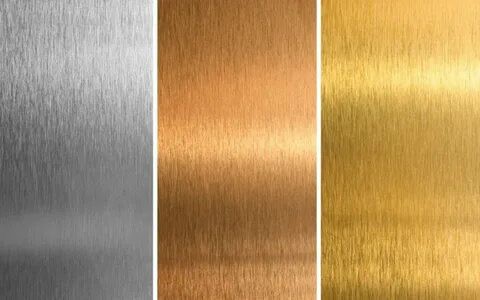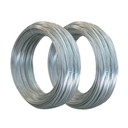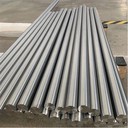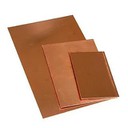Contact Us
- Xinwu District, Wuxi City, Jiangsu Province
- info@szdepu-metals.com
- +86 134 24179016
Hairline Stainless Steel
Why Choose Us Hairline Stainless Steel
We are your trustworthy stainless steel supplier
Rich experience
We have many years of experience in the stainless steel industry and can meet your various needs.
01
Wide range of products
We provide various types of stainless steel, including brushed stainless steel, mirror stainless steel, etched stainless steel, colored stainless steel and so on.
02
High quality
All our products undergo strict quality control to ensure you get the highest quality stainless steel.
03
Competitive prices
We offer competitive prices to ensure you get value-for-money products.
04
High-quality service
We provide high-quality services, including pre-sales consultation, after-sales service, etc.
05
 SUS 304 Hairline
SUS 304 Hairline—Material :SUS 304 Hairline. —Grade: 201/ 304 / 316L /430. —Thickness: 0.3mm – 2.0mm. —Size:
 Stainless Hairline Gold
Stainless Hairline Gold—Material :stainless hairline gold. —Grade: 201/ 304 / 316L /430. —Thickness: 0.3mm – 2.0mm. —Size:
 Bronze Hairline Stainless Steel
Bronze Hairline Stainless Steel—Material :bronze hairline stainless steel. —Grade: 201/ 304 / 316L /430. —Thickness: 0.3mm –
 304 Hairline Stainless Steel
304 Hairline Stainless Steel—Material : stainless steel 304 hairline finish. —Grade: 201/ 304 / 316L /430. —Thickness: 0.3mm –
 Stainless Steel 304 Hairline Finish
Stainless Steel 304 Hairline Finish—Material : stainless steel 304 hairline finish. —Grade: 201/ 304 / 316L /430. —Thickness: 0.3mm –
 Hairline Gold Stainless Steel
Hairline Gold Stainless Steel—Material : hairline gold stainless steel. —Grade: 201/ 304 / 316L /430. —Thickness: 0.3mm – 2.0mm.
 Stainless Black Hairline
Stainless Black Hairline—Material : stainless black hairline. —Grade: 201/ 304 / 316L /430. —Thickness: 0.3mm – 2.0mm.
 Stainless Gold Hairline
Stainless Gold Hairline—Material : stainless gold hairline. —Grade: 201/ 304 / 316L /430. —Thickness: 0.3mm – 2.0mm.
 Hairline Steel
Hairline Steel—Material : hairline steel. —Grade: 201/ 304 / 316L /430. —Thickness: 0.3mm – 2.0mm. —Size:
 Ss Hairline
Ss Hairline—Material : ss hairline. —Grade: 201/ 304 / 316L /430. —Thickness: 0.3mm – 2.0mm. —Size:
 Stainless Hairline 304
Stainless Hairline 304—Material : stainless hairline 304. —Grade: 201/ 304 / 316L /430. —Thickness: 0.3mm – 2.0mm. —Size:
 HL Finish Stainless Steel
HL Finish Stainless Steel—Material :hl finish stainless steel. —Grade: 201/ 304 / 316L /430. —Thickness: 0.3mm – 2.0mm.

What Is A Hairline Stainless Steel
Hairline stainless steel is a type of stainless steel sheet with a fine, brushed finish that creates a subtle, linear texture. This finish is achieved by mechanically drawing the surface of the sheet with a fine abrasive, resulting in a uniform and consistent pattern of fine lines.
Benefits Of Hairline Stainless Steel
Aesthetic appeal
The brushed finish adds a touch of elegance and sophistication to any space. It can be used to create a modern, contemporary look or a more classic and timeless feel.
Durability
Stainless steel is known for its strength and resistance to corrosion, rust, and scratches. The hairline finish further enhances these properties, making it ideal for high-traffic areas or applications exposed to the elements.
Easy to clean and maintain
The smooth, non-porous surface of hairline stainless steel makes it easy to clean and maintain. It resists fingerprints and water spots, making it a low-maintenance material.
Versatility
Hairline stainless steel is available in a wide range of sizes, thicknesses, and finishes, making it suitable for a variety of applications. It can be used for walls, ceilings, countertops, furniture, appliances, and much more.
When choosing hairline stainless steel, it is important to consider the following factors:
Grade
The most common grades of stainless steel used for hairline finishes are 304 and 316. Grade 304 is suitable for most indoor applications, while grade 316 is more resistant to corrosion and is ideal for outdoor applications or areas with high humidity.
Thickness
The thickness of the sheet will affect its durability and rigidity. Choose a thickness that is appropriate for your intended application.
Finish
Hairline finishes can vary in intensity, from a very light brush to a more pronounced texture. Choose a finish that suits your aesthetic preferences.
Types Of hairline stainless steel

Hairline stainless steel, while seemingly straightforward, does offer some variety based on several factors:
1. Material:
- 304 Stainless Steel: The most common and affordable option, suitable for most indoor applications.
- 316 Stainless Steel: Offers superior corrosion resistance, ideal for outdoor use, marine environments, or areas with high humidity.
- Colored Stainless Steel: PVD technology allows for various colors like gold, rose gold, black, and blue, adding a unique design element.
2. Finish Intensity:
- Light Hairline: Creates a subtle, almost frosted appearance with barely visible lines.
- Standard Hairline: The classic hairline finish with a moderate texture and consistent lines.
- Heavy Hairline: A more pronounced texture with deeper lines, offering a bolder and more industrial aesthetic.
3. Pattern Direction:
- Uni-Directional: Lines run in one consistent direction, creating a streamlined look.
- Bi-Directional: Lines intersect in two directions, adding visual interest and a more dynamic texture.
- Random Hairline: Lines run in various directions, offering a more organic and natural appearance.
4. Additional Treatments:
- Polished Hairline: Combines a hairline finish with a slight polish, offering a subtle shine and enhanced reflection.
- Brushed Hairline: Provides a more matte and textured finish alongside the hairline pattern.
- Etched Hairline: Deepens the hairline texture for a three-dimensional effect, often used for artistic applications.
5. Custom Options:
Some suppliers offer custom hairline finishes in terms of pattern density, line direction, and even incorporating other textures or designs.
Choosing the right type of hairline stainless steel depends on your specific needs and preferences. Consider the application, desired aesthetic, budget, and desired level of durability when making your selection.
Key characteristics of Hairline Stainless Steel
Appearance:
- Brushed finish: Composed of fine, uniform lines created by mechanical drawing with an abrasive.
- Subtle texture: Adds visual interest without overwhelming other design elements.
- Modern and sophisticated aesthetic: Enhances the look of various applications.
- Reflective properties: Varies depending on the grade and finish, with polished hairline offering a mirror-like effect.
Functionality:
- Durability: Highly resistant to corrosion, rust, and scratches, making it ideal for demanding environments.
- Low maintenance: Easy to clean and maintain due to its smooth, non-porous surface.
- Versatility: Available in various sizes, thicknesses, and finishes, suitable for diverse applications.
- Hygienic: Smooth surface inhibits bacterial growth, making it suitable for cleanroom environments.
Technical Properties:
- Material: Most commonly 304 or 316 stainless steel, with 316 offering higher corrosion resistance.
- Finish variations: Intensity can range from subtle (2B) to pronounced (4B), with additional options like cross, random, and directional hairline.
- Combinations: Available with mirror finish for reflectivity, embossed for added dimension, and perforated for transparency.
- Thickness: Varies depending on application needs, typically ranging from 0.5mm to 2.0mm.
Application of Hairline Stainless Steel





Marine applications: 316 grade offers superior corrosion resistance in saltwater environments.

The Art of Hairline Stainless Steel: Craftsmanship Beyond the Lines
Hairline stainless steel, with its subtle yet impactful texture, is more than just a material; it's a canvas for skilled craftsmanship. While the basic process involves mechanically brushing the surface, true artistry lies in the details that elevate the final product. Here's a deeper dive into the craftsmanship of hairline stainless steel:
Material Selection:
Beyond the grades: While 304 and 316 are common choices, craftsmen might opt for specific alloys based on the desired color, corrosion resistance, or workability.
Surface preparation: The quality of the initial surface plays a crucial role. Skilled artisans ensure a smooth, even base for the brushing process.
Brushing Techniques:
Traditional tools: Artisans might use specialized brushes or hand tools to create unique patterns or textures, adding depth and character.
Machine control: Precision machines offer consistent finishes, but skilled operators can adjust parameters for subtle variations and a more natural look.
Multi-directional brushing: Skilled craftspeople might use different brushing directions to create specific effects, like a swirling pattern or a unidirectional flow.
Finishing Touches:
Polishing: Highlighting the brushed lines and achieving a mirror-like finish requires meticulous polishing techniques and attention to detail.
Embossing and etching: Combining hairline finishes with other textures like embossing or etching adds depth and dimension, showcasing the artisan's skill.
Coloring: PVD technology allows for creative color options, and skilled artisans can use it to achieve even gradients or unique accents.
Additional Factors:
Custom fabrication: Skilled artisans can tailor sheets to specific sizes, shapes, and even incorporate intricate cutouts or designs.
Quality control: Meticulous inspection at every stage ensures consistency and identifies any imperfections before the final product.
Benefits of Craftsmanship:
Unique aesthetics: Handcrafted hairline finishes offer a level of individuality and character that mass-produced sheets lack.
Enhanced durability: Careful selection of materials and techniques ensures long-lasting beauty and functionality.
Sustainability: Artisanal processes often utilize smaller batches and minimize waste, contributing to a more sustainable approach.
Choosing a Craftsman:
Experience and portfolio: Look for artisans with a proven track record of high-quality work and a portfolio that reflects your desired aesthetic.
Understanding of materials: Choose someone who understands the nuances of different stainless steel grades and their suitability for your project.
Communication and collaboration: Ensure open communication to discuss your vision and collaborate on achieving the desired outcome.
By appreciating the craftsmanship behind hairline stainless steel, you can not only choose a beautiful and durable material but also support the artistry and dedication of skilled artisans. Remember, the lines on the surface are just the beginning; it's the human touch that truly elevates this material to a work of art.
How to Maintain Hairline Stainless Steel
Maintaining the beauty and functionality of your hairline stainless steel requires proper care. Here are some key steps to follow:
General Cleaning:
- Frequency: Clean regularly, depending on the environment and use. High-traffic areas or outdoor locations might need daily attention, while sheltered indoor areas can be cleaned weekly or bi-weekly.
- Solution: Use a mild detergent solution diluted with warm water. Dish soap or a specialized stainless steel cleaner are good options. Avoid harsh chemicals, acids, or abrasives, as they can damage the finish and etch the lines.
- Method: Use a soft cloth or sponge to wipe the surface gently. Pay close attention to the textured areas to remove any trapped dirt or grime. Follow the direction of the hairline to avoid lifting or damaging the texture.
- Rinsing: Rinse thoroughly with clean water to remove all soap residue. This is crucial to prevent soap build-up and water spots.
- Drying: Use a microfiber cloth to dry the sheet completely. This will help prevent water stains and streaks.
Additional Tips:
- Polished finishes: These require more frequent cleaning as fingerprints and smudges are more visible. Use a commercial stainless steel polish to enhance the shine periodically.
- Brushed finishes: While less prone to fingerprints, they can accumulate dust. Use a soft brush for regular dusting and a mild detergent solution for cleaning.
- Outdoor sheets: Rinse frequently with fresh water, especially in areas with salt exposure, to prevent corrosion and discoloration. Consider using a pressure washer with a mild soap solution for deeper cleaning.
- Stains: Address spills and stains promptly to prevent them from setting in. For tough stains, use a specialized stainless steel cleaner or a paste of baking soda and water.
- Scratches: Avoid dragging objects across the sheet. Use felt pads under furniture or other objects that might come in contact with it.
- Maintenance schedule: Create a regular maintenance schedule based on your specific use case and environment.
Pro Tips:
- Hidden corners: Don't forget to clean the areas between the lines and any corners or edges where dirt can accumulate.
- Seasonal care: Give the sheet a more thorough cleaning seasonally, using a specialized cleaner to remove any built-up grime or residue.
- Always test any cleaning product on an inconspicuous area first to ensure it doesn't damage the finish.
By following these tips, you can ensure that your hairline stainless steel shines beautifully and maintains its stunning texture for years to come. Remember, regular cleaning, gentle handling, and the right cleaning solutions are key to preserving the craftsmanship and elegance of this unique material.
Effect Steps Of Hairline Stainless Steel
The captivating effect of hairline stainless steel goes beyond its visual appeal. It's a carefully crafted interplay of material, technique, and purpose, resulting in a surface that's both visually striking and functionally effective. Here's a breakdown of the key steps involved in creating this effect:
Intention & Planning:
- Project goals: Identifying the desired aesthetic and functional requirements sets the stage for selecting the right material and process.
- Material selection: Choosing the appropriate grade of stainless steel (e.g., 304 for indoor, 316 for outdoor) and thickness ensures durability and suitability for the environment.
- Pattern selection: Standard, cross, random, or directional hairline finishes offer nuanced textural variations to match the desired effect.
Material Preparation:
- Surface conditioning: Ensuring a smooth, even base is crucial for achieving an immaculate brushed finish. This might involve grinding, sanding, or polishing steps.
- Cleaning and degreasing: Eliminating any contaminants on the surface prevents imperfections and ensures better adherence of the brushed texture.
Brushing Process:
- Machine selection: Using specialized brushing machines with adjustable parameters allows for precise control over the intensity and direction of the brushed lines.
- Skilled operator: Experienced technicians guide the machine, adjusting pressures and angles to achieve consistent and uniform finish across the surface.
- Multiple passes: Depending on the desired depth and effect, multiple brushing passes in specific directions might be used.
Finishing Touches:
- Polishing: For a mirror-like sheen, further polishing steps highlight the brushed lines and enhance the reflective properties.
- Embossing or etching: Combining hairline finish with other textures adds depth and dimension, creating unique visual appeal.
- Cleaning and inspection: Final cleaning removes any residual debris, and meticulous inspection ensures a flawless finish before delivery.
The Evolving Effect:
- Hairline stainless steel's impact extends beyond its initial installation. Regular cleaning and maintenance preserve its beauty and functionality.
- The material's natural aging process can subtly soften the brushed lines, adding a touch of vintage charm over time.
Summary:
The effect of hairline stainless steel isn't merely a surface-level detail; it's a culmination of meticulous planning, skilled craftsmanship, and careful attention to detail. By understanding the steps involved, you can appreciate the artistry behind this versatile and enduring material.
Frequently Asked Questions Hairline Stainless Steel
Q: 1. What is hairline stainless steel?
Q: 2. What are the benefits of using hairline stainless steel?
● Durable and long-lasting
● Easy to clean and maintain
● Versatile for various applications
● Adds a touch of sophistication
Q: 3. What are the different types of hairline finishes?
● Cross hairline (intersecting lines)
● Random hairline (non-directional lines)
● Directional hairline (lines in a specific direction)
Q: 4. What are the common grades of stainless steel used for hairline finishes?
● 316 (superior corrosion resistance, suitable for harsh environments)
Q: 5. Can hairline stainless steel be painted?
Q: 6. Where can I use hairline stainless steel?
● Wall panels and furniture elements
● Elevator cladding and signage
● Decorative accents and artistic projects
● Marine applications (316 stainless steel)
Q: 7. What is the thickness range of hairline stainless steel sheets?
Q: 8. What are the standard sizes available?
Q: 9. Can hairline sheets be bent or shaped?
Q: 10. How do I clean and maintain hairline stainless steel sheets?
● Rinse thoroughly and dry completely with microfiber cloth.
● Avoid harsh chemicals and abrasives.
● Clean more frequently in high-traffic or outdoor areas.
●Address spills and stains promptly.
Q: 11. Are hairline stainless steel sheets eco-friendly?
Q: 12. Do hairline sheets require special installation techniques?
Q: 13. Where can I buy hairline stainless steel sheets?
Q: 14. How do I choose the right hairline sheet for my project?
Q: 15. Can I get samples before purchasing?
Q: 16. What are the warranty options for hairline stainless steel sheets?
Q: 17. Are there any safety precautions to take when handling hairline sheets?
Q: 18. What are the latest trends in hairline stainless steel design?
Q: 19. How does hairline stainless steel compare to other textured metals?
Q: 20. What is the cost of hairline stainless steel sheets?
As one of the leading hairline stainless steel manufacturers and suppliers in China, we warmly welcome you to buy or wholesale cheap hairline stainless steel in stock here from our factory. All customized products are with high quality and competitive price. For free sample, contact us now.





